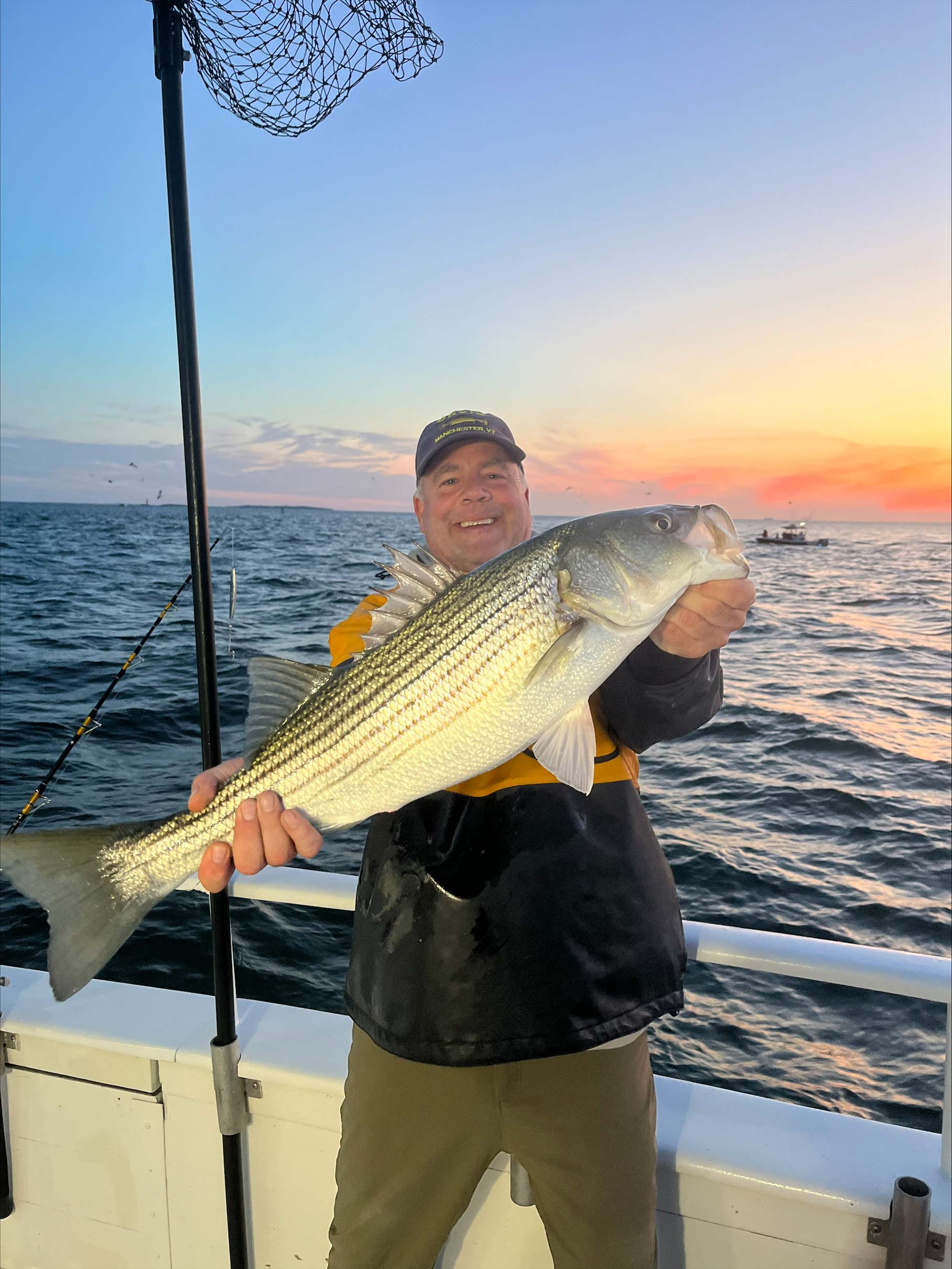
No matter where or when you fish for striped bass, you can score with a jig!
This spring has seen striped bass jigged in almost unprecedented numbers across the Northeast. The way things are currently going, it seems as though jigging will be the way to go for the entire 2023 season, especially with the new slot limit. This is the case because jigging does a great job mimicking sand eels, which are a staple bait for small to medium stripers.
Many popular techniques do a better job targeting large fish; live-lining bunker, live eels, trolling tubes or mojos among many others. Larger fish must be released, if you’re looking for a keeper, it needs to fit into a tight slot of 28 to 31 inches. I’m a jigging fanatic, you can do it from party boat, private vessel, kayak, even from shore… and you will catch stripers. Jigging works best during daylight hours and can be utilized in every location where bass can be found, from western Long Island Sound to Montauk and Block Island, as well as all the areas along the Atlantic shoreline from Southern New Jersey through New England.
If you don’t see birds diving and/or fish breaking water, then you should fish by location, meaning rips, eddies, underwater boulders or where currents converge. Sometimes the bass will be busting the surface, chasing bait, a sight that will surely get your adrenalin pumping! If you find yourself in a similar situation, remember the larger stripers are lazy and normally like to hang out close to the bottom. So keep your jig “in the smaller fish zone” a bit away from the bottom structure and closer to the surface, which will normally mean lots of action with the smaller, keeper-sized bass.
When jigging for stripers, the best technique to use is called squidding, although the proper retrieve gives the impression of a sand eel, which normally swim almost vertically. Either underhand cast away from the boat or simply drop your jig to the bottom and then take about 10 to 15 cranks on the reel. If nothing happens, free spool the jig, letting it flutter back to the bottom and repeat. Many times the jig will be hit on the way down, so be prepared and if you feel the fish, quickly set the hook.
There are various shapes, colors and sizes of jigs on the market today. Some will be the plain, shiny chrome types like Ava and Diamond jigs, while others might feature a hammered finish, silver or gold coloring may work better on different days. The single hook variety is best for easy and safe release. You can also replace the standard hook with a sharper, stainless steel one. If you want to be really sporting, crush or file off the barb for a no-damage release if the fish is too large or small.
It’s a good idea to bring a variety of jig sizes, colors and styles. Depending upon the water depth and tidal speed, I use jigs from 4 to 7 ounces (113 to 198 grams). The jig shape and color can also make the difference between success and failure. On cloudy days I prefer gold, while silver works best on bright, sunny days. Skinnier jigs more closely resemble sand eels while wiser profiles will mimic other baits like peanut bunker or mackerel. Keep an eye on which type is doing well for other anglers and switch to whichever type is catching. Jigging can be classified by some as “work,” but not if you have the correct tackle, in this case meaning line, rod and reel. I prefer a lighter composite conventional setup; I use a 7-foot Shimano Terez rod paired with an Accurate BX-400 single-speed 4:1 gear ratio reel, spooled with Power Pro 30-pound braid, at the business end I add a 6- to 7-foot mono or fluorocarbon leader attached with an Albright knot. A spinning reel is very sporty and also works fine, but is a bit more work when you send the jig back to the bottom. If your reel has a higher retrieve ratio, crank slowly.
A great advantage with jigging is that it works for the entire season, start to finish. I’ve caught bass on jigs from May right up until closing day. It’s the norm to land stripers on jigs throughout the season due to the large number of baitfish. Check the ads in the Fisherman for boats that run jigging trips for stripers.
No matter where or when you fish for striped bass, you can definitely score with a jig!



